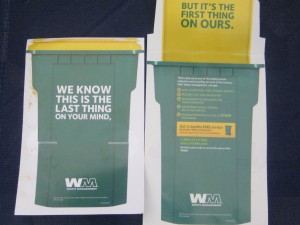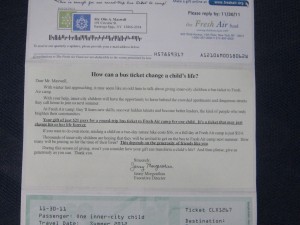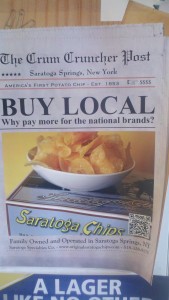Nobody’s going to read your sales letter. Well, maybe that’s a bit harsh. Nobody’s going to read your sales letter exactly the way you crafted it. They’ll bounce around, clinging on words that attract them like pretty bangles and ignoring your strongest selling points, they’ll go straight to the P.S. and double back in the letter…. And if you’re luck at the end of all this they will pay some attention to your call to action.
Don’t feel bad. You are getting paid to sell, not to write creative prose. And you will be amply rewarded if you apply a few tricks from the copywriter’s quiver of reader retention arrows.
Set the hook right after the opening of the letter. I shared the opening of the Geneva letter inviting business owners to a two-day seminar. The first paragraph flattered them as the owner of a valuable business. The second paragraph suggested they may well receive an offer in a red-hot market.
Now comes the third paragraph, which frets: But what if the offer is too low, even though it may seem astronomically high to you? What must you know to negotiate the sales process? And what is the downside, should you decide not to sell in today’s sizzling market?
So now we’ve introduced a problem which might not have been relevant had we not flattered the egoistic business owner at the beginning of the letter. And we can proceed to introduce the Geneva Business Valuation Seminar as the solution with a call to action.
This is a four-page letter, which is why we can afford to wait so long for the CTA. In a shorter letter it might come in the third or second paragraph. At this point, the DNA of our message is on the page and they have enough information to act immediately, if they wish, or to continue reading.
Guide the reader through the letter with connective words and phrases. “And” lets them know you’re about to add a selling point. Same with “Plus”. “What’s more” supersizes this, telling the reader you’ve headed to a whole new level of benefits. “That’s why” tells the reader you are about to deliver a sum-up selling argument. “But” is a qualifier—you may agree with what I just said, here’s a consideration you need to keep in mind. And yes, I realize the Queen does not begin her English sentences with prepositions. You need to make a choice between getting an A in English, or selling as hard as you possibly can.
Keep your paragraphs and sentences short to make the letter an easy read. When I started as a new copywriter, I was told to keep paragraphs under six lines. Today this seems impossibly long to me. Five lines maximum, please. Sentences should fit on one line if possible, or should be broken with a comma (often used when grammar rules say it is superfulous), em dash or ellipse to give the reader easily digestible chunks of information. And pepper that olio with the occasional one-line paragraph and one-word sentence.
Help out your art director by making layout suggestions in your draft. Indented paragraphs, centered subheads, important words and phrases should be bold-faced or underlined in the body copy. Tell your designer that you’re not doing art direction; rather, you’re making suggestions as to where emphasis should be placed. Then, cross-check the first round of comps to see that you haven’t been completely ignored; Quark and InDesign ignore underlining when a Word doc is imported and your designer may not bother to go back and add it back. (Or at least I’m told this is what happens; the designer may be trying to sabotage my copy by taking out the formatting, but that seems less likely.)
What you are doing with all these efforts is to make the letter scannable. A reader who does not have the patience (or the ability) to read beginning to end can hop from emphasis point to emphasis point like a pebble skipping across a pond, and still understand what you have to sell and what you want them to do about it.
Excerpted from my new book, Copywriting that Gets RESULTS! Get your copy here.


